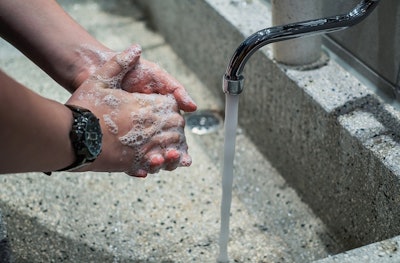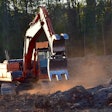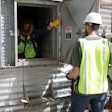
The pandemic has not onlychanged the way we do business, but also emphasized the role of grain processing and feed mill employees in controlling infectious agents agricultural workers are exposed to daily.
During her GEAPSStand Up 4 Grain Safety presentation,Ellen Duysen内布拉斯加州大学医学中心,shared best strategies to prevent and reduce transmission of germs between our different life environments – work, home and community.
In rural environments, infection can spread quickly, says Duysen. “In rural communities, we may have less access to medical care, and unfortunately, we may have lower vaccination rates,” she says.
Whether you work at a grain elevator, feed mill or other type of agricultural setting, here are a few best practices employees can use to protect the workplace, food supply chain, and most importantly, yourself and your family from health hazards.
- Stay home when you’re sick
“With ag workers, there's a mentality that we work no matter what, no matter how horrible we feel,” says Duysen. “But we can be making others sick by coming into work.”
Duysen says it’s better to have one worker out instead of 15 because of a spreading illness. - Wash your hands
Handwashing with soap removes germs from hands. Without realizing it, people frequently touch their eyes, nose, and mouth, which allows germs into the body. - Cover your coughs and sneezes
Not only does covering coughs and sneezes keep hands clean, it can also help prevent the spread of serious respiratory illnesses. - Wear a mask
Masks can help protect against grain dust, bacteria, silica insecticides, pesticides, and mycotoxins. Duysen notes N 95 masks are the best respiratory protection. - Avoid close contact
For example, avoid hand shaking, says Duysen. “In rural communities, we all want to shake hands,” she says. “But that’s a fast way to spread disease.”
Duysen also suggests, when possible, hold staff meetings with a lot of people outdoors or virtually and stagger crew start times. - Clean and disinfect high-touch areas,including PPE
Keep disinfectant and paper towels handy in group areas like restrooms and break rooms, so employees are more likely to clean and disinfect them.
Have sanitizer and disinfecting wipes available to disinfect personal protective equipment and teach employees to keep their PPE separate from each other. - Get immunized
Employees should stay current on their flu, tetanus, Hepatitis B, shingles and COVID vaccines to keep everyone protected. - Do not wear your dirty clothes home
“If you've been working around aflatoxin or livestock, avoid wearing your dirty clothes home,” says Duysen. “Please put dirty clothes in a bag to take home or just leave the dirty stuff in a locker at work. Wear something clean home. It really does help keep infectious diseases at bay.”
Duysen says these best practices will help keep employees and their families as safe as possible.
“At facilities, we often focus on the big items, which, of course, is important,” she says. “But think about more than the big hazards … also think about those microscopic hazards.”






















